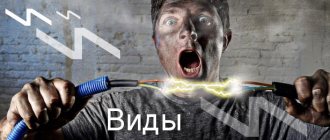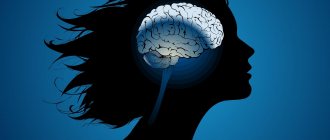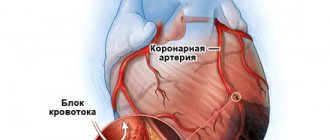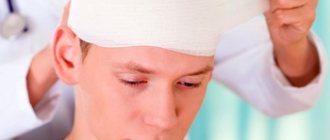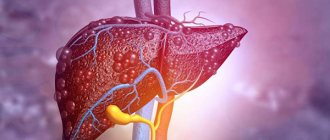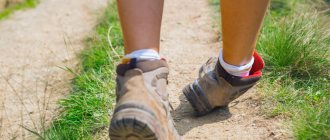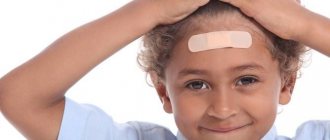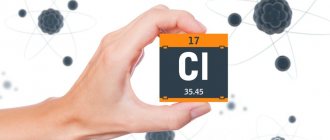Heatstroke. Symptoms, causes and first aid for heat stroke
22.05.2018
Heatstroke is a painful condition resulting from prolonged exposure of the body to high temperatures. To put it simply, heatstroke is overheating of the body.
As a result of overheating, the body is unable to maintain normal body temperature, because The processes of heat generation intensify with a simultaneous difficulty in heat transfer, which subsequently causes serious disruption of its vital functions.
Heat stroke can be especially dangerous for people suffering from cardiovascular diseases, including cardiac arrest.
Symptoms of Heat Stroke
- redness of the body skin; - shortness of breath; - cold sweat; - weakness; - nausea, vomiting; — High temperature (up to 39-41°C); - dizziness, darkening of the eyes, visual hallucinations (flickering before the eyes, feeling of foreign objects moving, goosebumps crawling before the eyes); - pupil dilation; - Strong headache; - frequent and weak pulse; - skin becomes hotter and drier; - muscle spasms and pain; - rapid breathing; - in severe cases - hallucinations, convulsions, involuntary urination and defecation (stool, bowel movements), loss of consciousness; - disturbance or complete lack of sleep (insomnia) The opposite is also possible, severe drowsiness.
First aid for overheating and sunstroke
Excessive exposure to the sun can lead to a sharp deterioration in health associated with overheating of the body. At risk, first of all, are children and the elderly, as well as people suffering from diseases of the circulatory system and metabolic disorders (thyroid diseases, diabetes, obesity, etc.).
The cause of health problems is a violation of thermoregulation. Body temperature depends on the ratio of heat generation processes in the body and heat transfer to the external environment. When the ambient temperature rises to 25-300C, high air humidity, and prolonged exposure to the sun, heat transfer becomes more difficult, which leads to overheating of the body. This is also facilitated by inappropriate clothing (synthetic, dark colors, too warm), physical activity, poor drinking habits, and the lack of a hat makes the development of sunstroke possible.
Overheating
- a state of the body in which, under the influence of external thermal factors (including solar radiation), an increase in body temperature occurs, accompanied by pathological changes in various functions of the body.
The first symptoms of overheating are:
increasing weakness, lethargy, feeling tired, drowsiness, headache, thirst, redness and moisture of the skin, increased heart rate and breathing against the background of normal body temperature.
As the condition progresses, the victim's temperature rises (up to 39-400C), headache increases, dizziness, tinnitus, nausea and vomiting appear, and sweating increases. The pressure decreases, weakness of cardiac activity develops, breathing becomes rare and irregular. Brief loss of consciousness (fainting) and convulsions are possible.
A characteristic sign of a serious condition is the cessation of sweating. The skin becomes dry, breathing becomes frequent and shallow, the pulse increases, and blood pressure drops. If you do not provide first aid to a person, a coma can occur with a fatal outcome.
Sunstroke
- This is damage to the central nervous system (brain) as a result of exposure to direct sunlight on the head. It is important to know that sunstroke can occur not only during exposure to the sun, but also after 6-8 hours.
Signs of sunstroke:
general malaise, feeling of exhaustion, increased body temperature, redness of the facial skin, headache and dizziness, tinnitus, “flickering of midges” before the eyes. There may be nausea and vomiting, increased heart rate and breathing, increased sweating, and nosebleeds.
With more severe damage, a severe headache appears, the temperature rises to 40-410C, blood pressure drops, loss of consciousness, breathing problems and convulsions may occur.
In hot weather outside, in a stuffy room or in transport, fainting
and without prior overheating or bareheaded exposure to the sun.
The onset of fainting is usually preceded by a pre-fainting state
: weakness, dizziness, darkening of the eyes, numbness of the arms and legs. Often this is all there is to it, but it happens that a person turns pale, breaks out in a cold sweat, his limbs become cold and he loses consciousness.
Knowing how to provide first aid for fainting, overheating and sunstroke can save the victim’s life.
The main thing is not to get confused and do everything quickly and correctly.
First aid for overheating and sunstroke
ü Transfer the victim to a cool, shady place
and lay him on his back
, placing a cushion of available materials (for example, rolled-up clothing) under his feet to improve blood flow to the head.
ü Unbutton your clothes, loosen your trouser belt and tie knot.
ü Provide complete rest and access to fresh air
(you can additionally use a fan in the room).
ü If the victim is conscious, give him cold water to drink.
(if possible, salted at the rate of 0.5 teaspoon of salt per 0.5 liter of water)
or strong iced tea.
ü Place a cold compress on your head
(wet towel) or wet your head with cold water. If possible, wrap the victim in a damp sheet or carefully pour cool water over him; Apply ice or cold water bottles to the head, armpits, groin and popliteal areas.
In more severe cases, when the victim is unconscious and there are breathing problems, it is necessary to check the patency of his respiratory tract. Having discovered that the tongue is sunk and there is vomit in the mouth, you need to turn the victim’s head to the side and clean the oral cavity with a bandage or handkerchief wrapped around a finger.
If breathing is weakened or absent, call an ambulance, and before it arrives, perform artificial respiration (if there is no pulse, and chest compressions).
If ammonia is available, you can let the victim inhale its vapors (by applying ammonia to a cotton pad), this will help activate the respiratory center.
To provide qualified medical care, the victim must be taken to the nearest medical facility as soon as possible. Depending on the severity of the condition, hospitalization may be carried out in the therapeutic or intensive care department of hospitals.
Hygienist
public health departments
Gomel City Center for State Exposure
A.I. Zinovich
Causes of Heat Stroke
Anything that disrupts the secretion of sweat and makes it difficult to evaporate contributes to overheating of the body.
In addition, the causes of heat stroke can be:
— high temperature and humidity; - high temperature in closed or poorly ventilated areas; - physical work in leather, rubberized or synthetic clothing under the influence of high ambient temperatures; - overwork; - dehydration of the body; - plentiful food; - long hikes in hot weather.
It is even easier to get heatstroke than sunstroke, because... the sun is not a necessary condition for him; it is enough to work hard in clothes that are too warm and do not allow air to pass through, or to spend several hours in a stuffy, poorly ventilated room.
Causes and consequences of sunstroke
Sunstroke can only happen to someone who is exposed to sunlight, as opposed to heat. This happens when the head is uncovered, the blood vessels of the brain dilate, capillaries can burst, which leads to excessive fluid flow to the head and damage to the nervous system. Also, sunstroke may not occur immediately, but after several hours. Its symptoms:
- dizziness and headache;
- high temperature, sweating;
- vomiting, diarrhea.
In particularly serious cases, a person may lose consciousness. There are also three types of consequences of such a blow: in the first case, breathing and the heart can stop, in the second - cardiac arrest and coma, and in the third - the appearance of hallucinations, delirium and even paralysis.
First aid for heatstroke
When observing the first symptoms, you should quickly respond by providing assistance to the victim. At the same time, do not forget that this will only be first aid, and it is better to immediately call an ambulance, since it is difficult for an ordinary person to determine the severity of the victim’s condition, and especially if it is an elderly person or a child.
Experts recommend the following first aid measures before the doctor arrives:
1. Transfer or transfer the victim to the shade or a cool, well-ventilated room with a normal level of humidity (the space should be open within the immediate radius, without crowds of people), and also away from the direct action of the heat source. Fan the victim with frequent movements.
2. Be sure to place the victim on his back. The head and legs should be raised, placing any things under them (for example, a bag).
Important! When vomiting, it is necessary to position the patient in such a way as to avoid choking on the vomit. If there was vomiting, then it is necessary to clear the airways of vomit.
3. Free the victim from outer clothing (especially those squeezing the neck and chest, free from the trouser belt; if the clothing is synthetic or made of thick fabric, it is better to remove it completely).
4. Wrap the body in a wet sheet or spray with cold water. Wet your face with cold water. You can also wet any cloth with cold water and pat your chest (you can pour water over the whole body at about 20°C or, if possible, take a bath with cool water (18-20°C)).
5. Give the victim plenty of cool water (preferably mineral water) with added sugar and a teaspoon of salt on the tip, or at least plain cool water. The usual tincture of valerian helps well: 20 drops per third glass of water. If the victim’s condition allows, you can give him strong tea or coffee;
6. Apply a cold compress (or a bottle of cold water, pieces of ice) to the head (on the forehead and under the back of the head)
Additional measures:
— In case of clouding of consciousness: let the victim smell the vapor of ammonia (from a cotton swab) or a 10% ammonia solution;
- If breathing or heart stops: perform artificial respiration and cardiac massage (until respiratory movements and cardiac activity appear (guide by pulse)).
After suffering a heatstroke, doctors usually recommend bed rest for several days. This time will be spent by the body restoring the activity of the nervous system, blood circulation, and a number of biochemical reactions. This recommendation should not be neglected, otherwise the risk of a similar condition reoccurring will only increase.
Difference between heatstroke and sunstroke
Infrared radiation coming from the sun can penetrate the blood-brain barrier, causing changes in parts of the brain. Excessive blood supply to the brain leads to compression of all cells. The nerve plexuses stop receiving adequate amounts of oxygen. If the condition persists for a long time, tissue necrosis and pulmonary edema may occur.
Heat stroke affects not just the brain, but all systems of the body. Excessive heating of the body can be stopped if a person changes his environment when unpleasant symptoms occur. In all cases, a person can be helped; for this it is necessary:
- isolate the victim from the sun;
- give air access;
- apply a cold compress to the forehead;
- give ammonia to smell, drink cool water;
- in serious cases, call an ambulance.
If you have a high temperature, antipyretic medications will not help; you need the help of a doctor. It is easier to prevent these conditions by observing the prevention of heat and sunstroke
Preventing Heat Stroke
- you need to avoid physical activity on too hot days and during active sun hours from 11.00 to 16.00; - You should protect yourself from the sun by wearing a hat or using an umbrella; - wear light-colored clothes made of well-ventilated, natural fabrics (cotton, linen, wool); - do not be in the sun during periods of increased activity; - drink plenty of fluids (1.5-2 liters per day). If you do physical work in the heat, then you need to drink even more fluids. Fruit drinks, kvass and especially hot tea quench your thirst well; - open windows, use fans and air conditioners to maintain constant air circulation in enclosed spaces, as well as to maintain the air temperature in the room optimal for human life (21-23°C); - overeating should be avoided; - It is not recommended to drink alcohol.
Helping a child with a fever
Typically, in the first 1-2 days of an acute viral infection, fevers occur on average 3-4 times a day, in the next 1-2 days - 2 times a day. The general febrile period most often lasts 2-3 days, but can be “normal” up to 5-7 days with some types of viral infections (influenza, adenoviral, enteroviral fevers). In any case, a child with a fever should be examined by a doctor.
Physical and medicinal methods are used to combat elevated body temperature during fever.
Why does a person overheat?
The human body is capable of maintaining a temperature of about 36.7 degrees Celsius. Excess heat is removed from the body through sweating. However, the natural process of thermoregulation may be disrupted if a person:
- is exposed to high temperatures and high humidity for a long time,
- is exposed to direct sunlight,
- moves intensively in a hot and stuffy room,
- dressed too warmly
- doesn't drink enough.
If normal cooling of the body is impossible, the water-salt balance in the body is disturbed, blood circulation and heart function worsen. This can lead to serious consequences, including cardiac arrest or brain hemorrhages. Heat injury can occur anywhere: on the beach, on the street, and even in the office. In any case, it requires immediate assistance
and, in case of severe symptoms, urgent consultation with a doctor.
How to behave in the heat
Sergey Boytsov, chief specialist in preventive medicine at the Russian Ministry of Health and Social Development, director of the State Research Center for Preventive Medicine, talks about how to improve your well-being on the hottest summer days.
What to do?
1. Hide from direct sunlight in the shade or cool room. 2. Take a horizontal position. 3. Unbutton or remove clothing. 4. Turn on the fan or wet your body with cool water. 5. Drink cool, salted water in small sips to restore the balance of minerals and fluids in the body. 6. Never drink alcohol or drinks containing caffeine. They cause dehydration. 7. If a person’s condition does not improve after a while or gets worse, call a doctor immediately.

